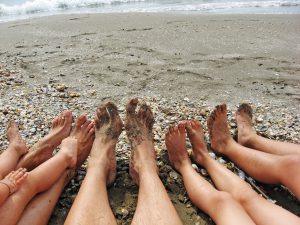Family History and Vein Health
 Our parents and ancestors can pass down biological traits. Perhaps you have inherited your mom’s lovely eyes, your dad’s high metabolism, and your grandmother’s beautiful smile. Along with those positive traits, you can also inherit their less than desirable traits such as varicose veins.
Our parents and ancestors can pass down biological traits. Perhaps you have inherited your mom’s lovely eyes, your dad’s high metabolism, and your grandmother’s beautiful smile. Along with those positive traits, you can also inherit their less than desirable traits such as varicose veins.
If a genetically close member of your family suffers from varicose veins, you have about a 40% chance of inheriting them yourself. If both of your parents have them, your chance increases to 90%. Those might not sound like the greatest odds, but there are ways to stave off varicose veins despite your genes. If varicose veins decide to stay in your family, we are here to help.
There are many risk factors that can lead to varicose veins. Defective or abnormal valves and/or vein walls are also hereditary conditions that can lead to varicose veins and spider veins. You can break the succession path by adopting a proactive strategy and adhering to these tips:
- Get Moving! Unlike exercise, which keeps the blood pumping through the veins of the leg and back up to the heart, sitting or standing for long periods of time can create pressure and cause blood to pool, leading to varicose veins. Getting up to stretch or just taking a short walk every so often relieves pressure on your veins and gets the blood pumping again.
- Put Your Feet Up. After any extended periods of sitting or standing, particularly at the end of the day for many of us, stave off swelling and other varicose vein symptoms by elevating your feet above heart level for 10-20 minutes. This allows for improved circulation, allowing blood to more easily return toward your heart and reduce pressure your legs may have developed.
- Watch Your Weight. Obesity weakens vein walls, leading to greater susceptibility to developing varicose veins. Extra body weight adds more pressure on your circulatory system, which can increase blood pressure, or cause blood to pool in the veins, thereby stretching them out and creating varicose or spider veins. Similarly, high-fiber, low-salt, antioxidant-rich foods can help the body maintain good cellular health and boost the integrity of tissues, including veins. It should also be no surprise that these types of food can also fight obesity.
- Dress for the Legs You Want. High heels increase pooling of blood in the veins of the legs by constricting the calf muscles, which are responsible for pumping blood from the legs to the heart. As such, low heeled shoes allow blood to flow through leg veins more easily by flexing the calf muscles in a more natural manner. Similarly, clothing that is tight particularly around the legs, groin, or waist can restrict blood flow through the veins. Compression wear may
- Get Screened. If you know you’re genetically pre-disposed to varicose veins, it’s never too soon to visit us for a vein health consultation. The earlier our vein specialists can diagnose any issues you may have, the easier it will be to treat them. It may also lead to a smoother recovery process. Varicose veins can be both chronic and progressive. Getting a jump on them at the first sign of symptoms will result in a favorable outcome before your veins can become worse.
If you’ve followed these tips already in the hopes of hedging your bets against genetic varicose veins and were unsuccessful, take heart. Following this advice will still result in better vein health than those of a poor, sedentary lifestyle. Better yet, today’s varicose vein treatments are leaps and bounds ahead of what was available just a decade ago. Your parents and grandparents may have had to consider open surgery as their only respite from varicose veins. Today, you can have your veins removed and return to normal activity within a day or two—with only a tiny incision to show for it.
Here’s wishing you lovely legs and good vein health.